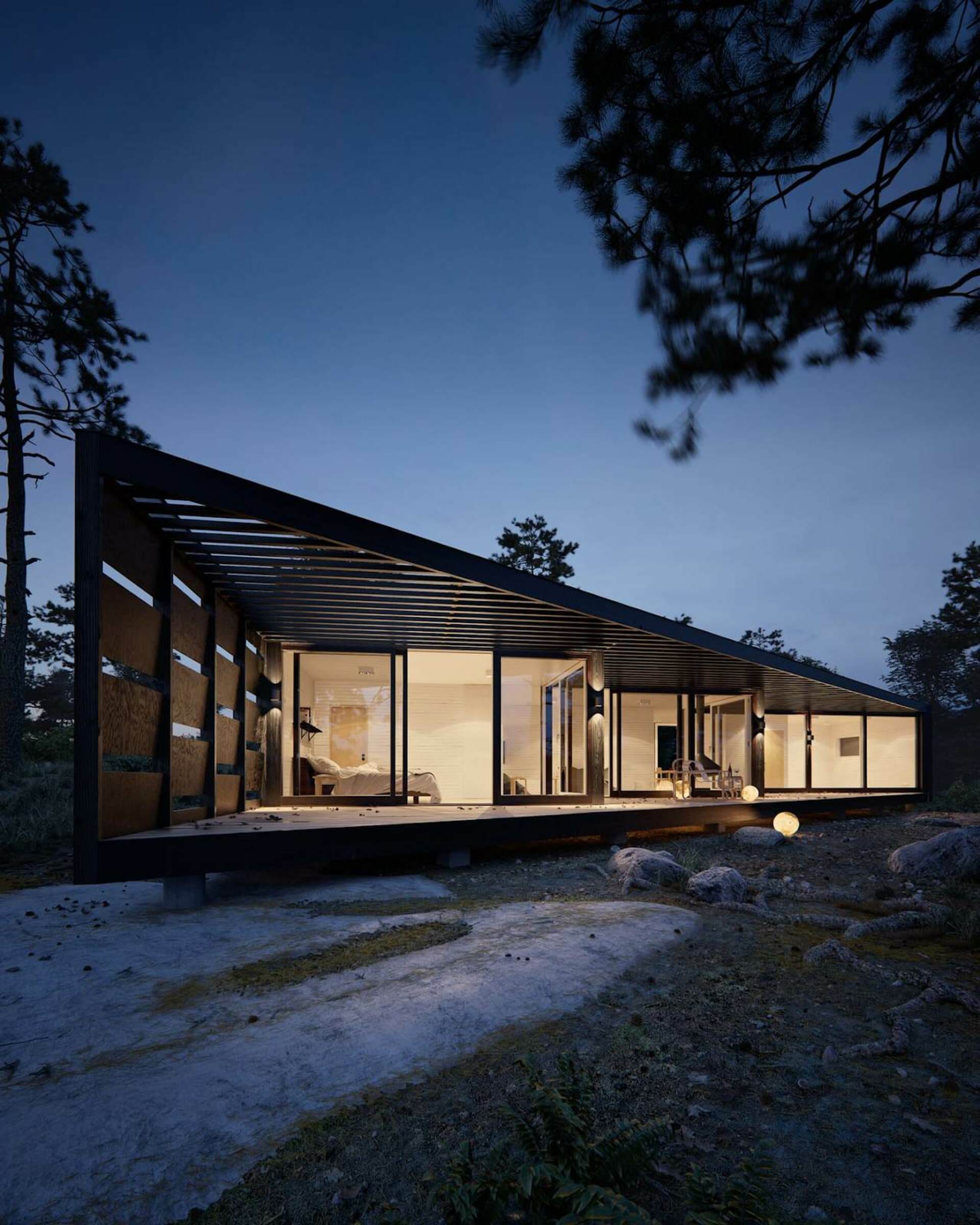Discover how 3D visualization transforms industries by enhancing design, communication, and engagement through advanced software and realistic digital content.
Introduction
3D visualization has become an essential tool across various industries, revolutionizing the way we perceive, design, and interact with digital content. This technology has profoundly impacted fields like architecture, interior design, product design, media, and more. By creating realistic representations of objects, scenes, and concepts, 3D visualization facilitates clearer communication and understanding.
What is 3D Visualization?
3D visualization is the process of creating three-dimensional images or animations to communicate a message or present information visually. It involves using computer software to generate lifelike representations that can be manipulated and viewed from any angle. This technique enhances understanding and communication by providing realistic models and scenarios, making it easier to interpret more complex information and concepts.
Principal Aspects of 3D Visualization
The principal aspects of 3D visualization include visualization software, realistic visualization techniques, computer-generated imagery (CGI), realism and quality, and the management of time and resources. These components are crucial for producing high-quality visual content that meets the needs of various industries.
The Importance of 3D Visualization Software
Selecting the right 3D rendering software is vital for the success of any 3D visualization project. Popular software includes tools like 3ds Max, Maya, C4D, and Blender for modeling and animation, V-Ray for rendering, and Chaos Vantage for real-time visualization. These packages offer features such as advanced modeling tools, realistic lighting and texturing options, and powerful rendering engines, enabling the creation of high-quality visual content.
Choosing the Right Software
Choosing the right 3D visualization software depends on the project's requirements, the desired level of detail, and the intended use. Proper software selection can significantly impact the efficiency and quality of the final output, as some software is more suitable for specific tasks than others. For example, Blender might be preferred for its open-source flexibility, while V-Ray is renowned for its 3D rendering software capabilities.
Features of 3D Visualization Software
Visualization software not only provides tools for creating stunning visuals but also enhances the workflow through integrated features. These features often include user-friendly interfaces, extensive libraries of materials and textures (like Chaos Cosmos), and robust support for various file formats. This integration is crucial for maintaining a seamless design process, enabling artists and designers to focus on creativity rather than technical challenges.

Realistic Visualization Techniques
Achieving realistic 3D visualizations involves using techniques such as photorealistic rendering, global illumination, and physically based rendering (PBR). These methods are essential for creating lifelike images that enhance user experience and engagement. Realistic visualizations are particularly important in industries like architecture, where accurate representations of buildings and interiors are crucial for decision-making.
Enhancing User Engagement
High-quality, realistic visuals can significantly improve user engagement and satisfaction by providing a more immersive and convincing experience. This is especially true in fields like product design, where detailed visualizations can showcase a product's key features effectively, leading to better consumer understanding and higher conversion rates.
Understanding Light and Material
Realistic visualization techniques require a deep understanding of light behavior, material properties, and environmental factors. Artists and designers use these techniques to simulate real-world conditions, ensuring that the final visuals are as close to reality as possible. This attention to detail not only improves the visual appeal but also builds trust with clients and customers, who can see exactly what they are getting.
The Role of Computer Generated Imagery (CGI)
CGI involves creating still or animated visual content using computer software. It is a cornerstone of modern 3D visualization, enabling the creation of complex and detailed images. CGI offers numerous benefits, including flexibility, precision, and the ability to create detailed and realistic visuals. However, it can be resource-intensive and requires significant expertise.
CGI in Various Industries
CGI has a profound impact on the quality and realism of visualizations, allowing for the creation of highly detailed and lifelike images. This technology is widely used in the media and entertainment industry to produce stunning visual effects in movies and games, enhancing the overall user experience.
Applications Beyond Entertainment
The use of CGI extends beyond entertainment, impacting industries like advertising, education, and even healthcare. In advertising, CGI can be used to create compelling visual narratives that attract and retain customer attention. In education, it provides interactive and engaging learning experiences. In healthcare, CGI can simulate medical procedures or visualize complex biological processes, improving both patient understanding and medical training.

Ensuring Realism and Quality
Achieving realism in 3D visualizations involves meticulous attention to detail in modeling, texturing, lighting, and rendering. Techniques like global illumination and PBR are crucial. Photorealistic rendering techniques, such as ray tracing and global illumination, are essential for creating lifelike images, and high-quality visuals can significantly enhance user engagement and satisfaction. Check out these 11 Tips for Lighting Renderings to Boost Photorealism.
Impact on Emotional Marketing
In architecture, for instance, a realistic image or animation can evoke the right emotions to convince clients of the design’s qualities. Realistic visualizations also play a significant role in emotional marketing, where creating an emotional connection with the audience can lead to better customer retention.
Creating an Immersive Experience
Realism and quality are not just about visual fidelity but also about the overall user experience. High-quality visuals create an immersive experience that draws users into the content, whether it is a virtual tour of a new building or a product demonstration. This immersive experience is essential for maintaining user interest and ensuring that the visual content achieves its intended impact.
Managing Time and Resources
The time required for 3D visualization varies depending on the complexity of the project and the desired level of detail. Efficient workflow management and resource allocation are crucial to keeping the whole creation process cost-effective. Optimizing resources involves using the right software tools, efficient rendering techniques, and skilled personnel to balance quality and efficiency.
Choosing the Right Software for Resource Management
Choosing the right 3D visualization software from the beginning is essential to leverage its capabilities to the fullest. Balancing efficiency and quality requires careful planning, selecting the right tools, and leveraging advanced techniques to achieve the best results within the available resources. This approach ensures that projects are completed on time and within budget, providing cost savings in the long run.
Resource Management in 3D Visualization
Resource management is a critical aspect of any 3D visualization project. It involves not only the selection of appropriate software but also the allocation of physical resources, such as high-performance computers and storage solutions. Effective resource management can significantly reduce the time-consuming aspects of the visualization process, allowing teams to focus more on creative and innovative tasks.
The Process of Creating 3D Visualization
Creating a 3D visualization involves several steps, from defining project scope and gathering resources to modeling, rendering, and post-processing. The process begins with establishing clear goals and requirements. For example, defining what an image should accomplish, such as selling a product or service, can greatly help in starting the project.
- Gathering Resources and References: Gathering resources and references is the next step. Collecting necessary materials and references ensures accurate modeling, as the human eye is naturally trained to spot errors in familiar objects and scenes. This step is crucial in the design process, where every detail must be accurate.
- Modeling and Texturing: Modeling and texturing come next. Creating detailed 3D models and applying textures is a meticulous task. No detail is too insignificant in a realistic visualization, so ensuring all models are accurate and detailed, and that materials are physically correct, is crucial. This step often involves using computer-aided design (CAD) software to ensure precision.
- Lighting and Rendering: Lighting and rendering follow. Setting up lighting and rendering the scenes is essential for achieving realism. Render engines like V-Ray are great at calculating lights, shadows, reflections, etc., so it’s important to make the most of your rendering software. Real-time rendering capabilities can also enhance the workflow, providing immediate feedback on changes.
- Post-Processing and Final Adjustments: The final step is post-processing and final adjustments. Refining the visuals in post-production is key to achieving the desired quality. Image editing tools and new AI tools can further elevate the quality of the images, ensuring they meet the project's standards.
Roles in the 3D Visualization Process
Understanding the roles played by each professional in the pipeline is important. After all, 3D visualization is not just about sitting in front of a computer and telling it what to do. Artists conceptualize and design creative elements, bringing the initial vision to life. Designers develop the technical aspects, including modeling and detailing, ensuring accuracy and functionality.
Technicians provide technical support, manage software, and handle rendering tasks. Their role is crucial for maintaining the workflow and ensuring that all technical requirements are met. Collaboration between these professionals ensures that the final product is of high quality and meets the project's objectives.
Collaborative Tools and Platforms
Effective collaboration is often facilitated by using collaborative tools and platforms that allow multiple team members to work on a project simultaneously. This collaborative approach not only speeds up the process but also ensures that different perspectives are considered, leading to a more refined and polished final product.
Tools and Technologies Used in 3D Visualization
The tools and technologies used in 3D visualization are diverse and specialized. 3D modeling software like 3ds Max, Maya, C4D, Revit, and SketchUp are commonly used for creating detailed models. Texturing and lighting solutions such as V-Ray are essential for adding realism to the models.
Rendering Engines and Post-Production Software
Rendering engines like V-Ray and Chaos Vantage are used for rendering the final images. These tools provide the necessary power and flexibility to create high-quality visuals. Post-production software, including various editing tools, is used to refine the images and make final adjustments.
AI and Advancements in Technology
Advancements in technology, such as artificial intelligence, are continually enhancing the capabilities of these tools. AI can automate many of the tedious tasks involved in 3D visualization, such as texture mapping and lighting setup, allowing artists to focus more on creativity and innovation.

Advantages of 3D Visualization
3D visualization offers numerous benefits, including enhanced understanding and communication, improved decision making, cost and time savings, and increased customer engagement. These advantages are crucial for businesses looking to stay competitive in today’s market.
Enhanced Understanding and Communication
3D visualization provides realistic models and scenarios, facilitating clearer interpretation of complex concepts and improving overall communication. This is particularly important in fields like architecture and interior design, where visualizing the final product can help clients and stakeholders make informed decisions.
Improved Decision Making
Detailed visual data enables quick and informed decision making, reducing risks and enhancing outcomes. By providing a realistic representation of the project, 3D visualization allows stakeholders to identify potential issues early and make necessary adjustments.
Benefits for Project Outcomes
This improved decision making process can significantly enhance project outcomes, ensuring that the final product meets or exceeds expectations. In the context of architectural visualization, for instance, seeing a detailed and realistic model of a building before construction begins can help identify design flaws or aesthetic issues that might not be apparent in traditional methods.
Cost and Time Savings
Identifying potential issues early and preventing costly physical model revisions can significantly reduce overall development time and expenses. This cost-effective approach ensures that projects are completed on time and within budget.
Streamlining the Design Process
In addition to direct cost savings, 3D visualization can also save time by streamlining the design process. By using advanced software tools and techniques, artists and designers can quickly create and modify visualizations, reducing the need for time-consuming physical models or physical prototypes.
Increased Customer Engagement
Interactive 3D models allow customers to explore features and functionalities, boosting engagement and satisfaction. This approach is particularly effective in online shopping, where virtual prototypes can provide a realistic representation of the product, leading to higher conversion rates.
Benefits for Customer Retention
Increased customer engagement is not only beneficial for sales but also for customer retention. By providing a more interactive and immersive shopping experience, businesses can build stronger relationships with their customers, leading to increased loyalty and repeat business.
Emotional Marketing Strategies
The use of 3D visualization in marketing and sales is also closely tied to emotional marketing strategies. By creating visually stunning and emotionally engaging content, businesses can connect with their customers on a deeper level, enhancing the overall customer experience.
Applications of 3D Visualization
3D visualization has wide-ranging applications across various industries, from architecture and interior design to product design, media, and entertainment. This technology enables architects to create precise and detailed building models, allowing for pre-construction adjustments and optimizations. This process provides comprehensive views for better planning and decision making. Check out the V-Ray VFX & Animation Showreel.
Enhancing Architecture and Interior Design
The architectural rendering and interior design rendering enhances presentations with immersive visual experiences. It showcases material textures and lighting effects realistically, helping clients visualize the final product. In product design and e-commerce, 3D visualization is used for product prototyping and enhancing product presentations, significantly impacting consumer decision making.
Product Design and E-Commerce
3D visualization is utilized for product prototyping and enhancing product presentations in e-commerce, significantly increasing demand and impacting consumer decision-making.
Media and Entertainment Uses
The media and entertainment industry extensively use 3D visualization and integrate stunning vfx renderings into movies. The game rendering technologies enhance the quality and realism, providing an immersive experience for users. Augmented reality applications integrate 3D visualization with real-world settings, enhancing perception and interaction through digital overlays.

Virtual Reality Applications
Virtual reality applications create immersive experiences in virtual environments. Real-time rendering and interactive 3D environments enhance the user's engagement, making the experience more realistic and enjoyable. Check out how V-Ray can help you and be the the Easiest Route to Virtual Reality.
Future of 3D Visualization
The future of 3D visualization is promising, with advancements in technology, expanded applications, enhanced virtual reality experiences, and greater user accessibility. Faster rendering technologies, better 3D architectural visualization software, improved real-time visualization tools, along with artificial intelligence integration, will drive future advancements.
Technology Convergence
These technologies are expected to converge in the near future, bringing users the best of both worlds. Broader use in medical and scientific research and increased adoption in construction and urban planning are expected as technology advances. This makes the process easier, faster, and more affordable, expanding into more fields of real life.
Virtual Reality Advancements
Developments in virtual reality will offer more immersive and interactive experiences. New developments in headset technology and its broader adoption by a large number of people will likely bring a renewed demand for virtual experiences. More user-friendly software interfaces and lower-cost solutions will make 3D visualization more accessible, supported by educational programs to train future professionals.

Innovations in Realism
Innovations in ultra-realistic texturing and lighting techniques, along with greater emphasis on photorealistic outputs and 3D printing integration, as well as AI advancements, will enhance the quality and realism of visualizations.
Bringing it All Together
3D visualization is a powerful tool with significant benefits and diverse applications. As technology advances, its impact will only grow, offering more realistic, efficient, and accessible solutions across various industries. The future of 3D visualization is bright, promising even greater advancements and broader adoption.





